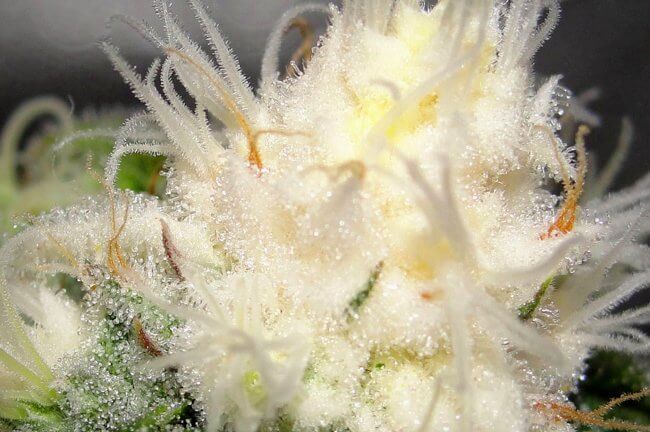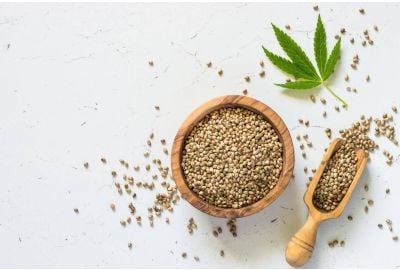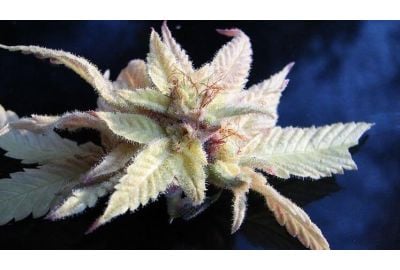Albino Weed: Does it Really Exist?
Albinism in marijuana is extremely rare, and there may be more than one cause. Due to a lack of chlorophyll, growers and stoners are stunned that an albino plant can survive. Are the snowy buds caused by genetic mutations, light bleaching, or something else?
Let's dig deeper into albino marijuana and try to debunk this not-so-colorful myth.
Is albinism possible in cannabis plants?
Albinism in plants, like animals, is possible. This phenomenon is caused by a lack or non-existence of chlorophyll, the pigment that makes plants green.
The process of photosynthesis requires this vital compound to convert light into food needed for plant survival. Most crops can’t survive without this activity, but sometimes they do.
Although beautiful, the white marijuana plant's leaves and buds lack chlorophyll, decreasing its ability to grow. The crops also soak up less energy from the sun’s rays, which is why many albino marijuana plants never reach maturity.

Causes of albino marijuana
There are various reasons why the characteristics of albinism may be present in your cannabis plant. Factors such as genetics and environmental conditions play a significant role.
Here are some causes of albino crops:
Genetics
Hybridization is the primary cause of albino cannabis.
Cannabis plant mutations are caused by natural gene alterations and marijuana strain breeders. These changes are how albino buds came to light, even though cultivators didn’t intend to cause pure white weed albinism through gene modification.
Here’s a brief overview of some important genetic terms:
- A weed phenotype is a unique physical expression of a marijuana strain’s genetic makeup. It depicts the buds' color, shape, smell, growth rate, height, and size.
- A cannabis genotype is the specific genetic combination in a cannabis plant that determines the traits found in the phenotype. Unique genotypes result from the chromosomes that the mother and father plants carry.
Growers regularly cross-breed different variations of cannabis to find the perfect hybrid seeds, and at times the result is less than ideal. The mixing of genetics is the reason why these albino weed strains exist.
Environmental conditions and false albinism
Plants can display albino traits due to a few environmental factors. Light bleaching, unsuitable growing mediums, pathogens, and fluctuating temperatures explain why some white-colored weed crops show albino characteristics.
- Light bleaching can occur when a plant gets too close to its illumination source. This event may give the top flowers and buds a white appearance but not the entire plant. This overlighting is a growing malfunction, not a genetic mutation, giving the crop a false albino look.
- Powdery mildew, a marijuana grower's nightmare, may also give your crops a white appearance. While an albino cannabis plant may be on a list of things you want to see, this cannabis disease is not.
- Certain cannabis strains could also develop white weed buds. Albinism doesn’t form part of these cultivars, even though their nugs appear to have white crystals. The White Widow strain is a perfect example, boasting a thick coat of resinous trichomes.
What to do if your weed plant is turning white
Plants with albinism traits aren’t curable and may not grow like regular crops. There’s nothing you can do once you discover the type of cannabis you have.
Research has shown that adding sugar to the nutrient routine might help slightly. The result, in the end, will still be an albino bud.
If environmental conditions are the reason for the color change in your plants, there are some things you can do. Adjusting lights, fixing humidity and temperature issues, and buying cannabis seeds with quality genetics are ways to avoid albino weed buds.

Are albino weed plants less potent?
With the process of photosynthesis slowed down or stopped in albino plants, you can’t expect the same potency as regular marijuana strains.
If a plant showing signs of albinism makes it to the later stages of growth, a few things can happen:
- Reduced plant development
- Diminished yields
- Lower THC and CBD levels with decreased potency
Despite additional supplementation, albino weed could still lack the energy to produce high-quality, potent buds. If the latter sounds tempting, ensure you grow high THC seeds with top-quality genetics for guaranteed strength.
How to avoid albino cannabis
The fact is that albino weed plants result from a genetic abnormality that produces less desirable marijuana.
Environmental conditions can be the reason your buds have a lack of pigment. Correct any temperature, humidity, or lighting issues as quickly as possible. Buying high-quality LED lighting for cannabis is one way of ensuring that light bleaching doesn't affect your yields.
Albino weed: A myth debunked or not?
We have uncovered that albino weed is, in fact, a natural phenomenon.
Its beauty may be something you want to witness but not smoke, as the marijuana from these plants is less potent. As a grower, your dreams of high-quality, heavy yields will dissipate if an albino cannabis plant is among your harvest.
Avoid these less desirable crops by managing your growing environment and selecting premium strains with reliable traits. Browse marijuana strains with spectacular genetics in our best-selling weed seeds category at Homegrown Cannabis Co.
About the author: Parker Curtis
Parker Curtis has around a decade of cannabis-growing experience, specialising in soil-less and hydro grows. He’s mastering outdoor, greenhouse, and indoor grows.


